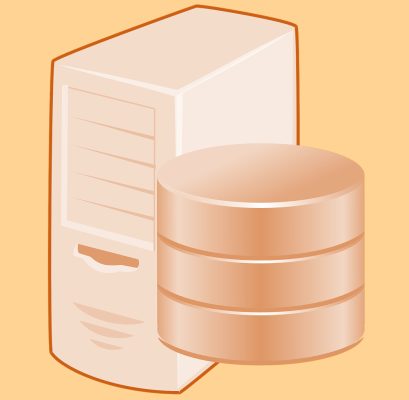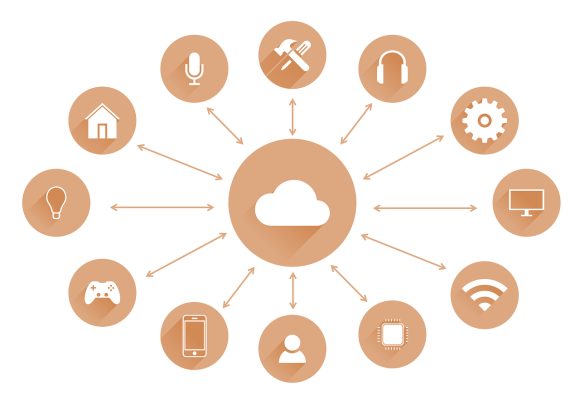The Internet has had a wild ride, from the dorm rooms of universities like Stanford and Harvard, to the office parks of Silicon Valley, to our desktops and our pockets. And now the Internet is starting to show up throughout our homes, built into items as large as refrigerators and washing machines to devices as small as thermostats and doorbells. The “Internet of Things” (IoT) is already transforming everyday life into an episode of “The Jetsons.”
It is estimated that more than 40 percent of U.S. households now have some sort of smart home device. Many of these devices fall into the category of smart security, such as surveillance cameras, smart locks, and smart alarms, which users can access remotely and control with a mobile app. Doorbell surveillance cameras, for instance, have become wildly popular, with the industry expected to be worth nearly $3 billion by 2025.
With increasing consumer demand for smart security devices, IoT developers have to carefully consider how to best connect the devices to data storage. For many, the default choice is often a cloud-based system, with all data traveling between the device and the end-user client through the cloud, where it gets stored.
However, developers know that there can be security, cost, and latency disadvantages to cloud storage. Fortunately, P2P technology help end users address many of these issues. This post will present a rundown of the vulnerabilities associated with cloud-based IoT and explain how a P2P IoT solution can provide the end users with better outcomes.
Security
Although reputable cloud providers and smart-device manufacturers take data security extremely seriously, the inherent vulnerability with a cloud-based service is that all data is stored centrally. Therefore, if security controls become compromised, the scale of the data theft can be enormous.
We only need to look at some recent examples of cloud security breaches to see this in action. In 2019, smart home security manufacturer Wyze Labs suffered a serious data breach. Because all that personally identifiable information (PII) was stored centrally in the Wyze cloud server, 2.4 million users had their PII exposed to hackers.
A decentralized P2P based IoT connectivity system, like the one Nabto provides, only uses the cloud to mediate connections between the device and end-user client. Once the connections are made, traffic occurs directly between the users own devices, without data passing through the cloud. Because there’s no central data storage involved, large scale data hacks are extremely difficult.
Speed and Latency
Speed is critically important for smart security devices. Doorbell surveillance cameras, for example, need to be able to provide a real-time video feed to the end-user client. Yet, a common complaint with cloud-based solutions is that communication latency can be as much as five or ten seconds. That’s an awfully long time to wait when you’re talking about a decision to allow someone into your home.
Under a P2P IoT platform, the device and the end-user client are connected directly, which means data between these two end points travels as quickly as possible, with the lowest possible latency. Nabto platform delivers real-time video transmission with an unsurpassed P2P ratio (98% in EU as of February 2020). This direct connection also means that making changes to the user interface is simple and immediate.
The P2P IoT platform also enables end users to control these products in real time. And with smart security devices, seconds count. An end user might need to pan surveillance cameras or remotely lock smart locks at a moment’s notice when responding to an immediate threat. The direct linkage between device and owner makes any device or user-interface changes seamless.
Cost
A P2P based IoT solution helps avoid the costly overhead that comes with a centralized cloud solution. This is because with P2P IoT, all data is stored at the device level. Whereas cloud systems require expensive data centers for storage, P2P hosts data among users’ own IoT device.
P2P IoT connects consumer devices directly to the consumer. Think of it as a super highway that drives your data directly by the cloud system into your smartphone, while a centralized system has to take local roads. If you’ve ever driven through a busy city at rush hour, you can imagine all that traffic. Data works the same way.
The intensity of data traffic in centralized cloud systems means increased need for server maintenance and updates. These are huge sunk costs that will end up on your bill. P2P IoT saves on data centers while providing pricing predictability, especially with Nabto’s one-time fixed pricing.
Thanks largely to savings from more efficient P2P connectivity, Nabto can cover the setup of cloud services, maintenance, and support, together with device license costs, in one fixed price, saving the customer of money and hassle.
The Bottom Line
P2P brings IoT technology into consumers’ homes, in a way that keeps their data safe. For end users, the decentralized network can provide significant benefits against centralized cloud computing systems.
Security, speed, and cost are probably the three biggest priorities for smart security device vendors Cloud-based IoT connectivity platforms often fall short on all three of these factors. Learn more about the Nabto P2P IoT platform here, and how it can provide better outcomes for smart security devices.
Read Our Other Resources
We’ve also published a range of IoT resources for our community, including:
- Your one-stop-shop for P2P here: https://www.nabto.com/p2p-explainer/
- Understand P2P from a developer’s perspective: https://www.nabto.com/developer-friendly-iot/
- See how reducing latency and P2P go hand in hand here: https://www.nabto.com/latency/







